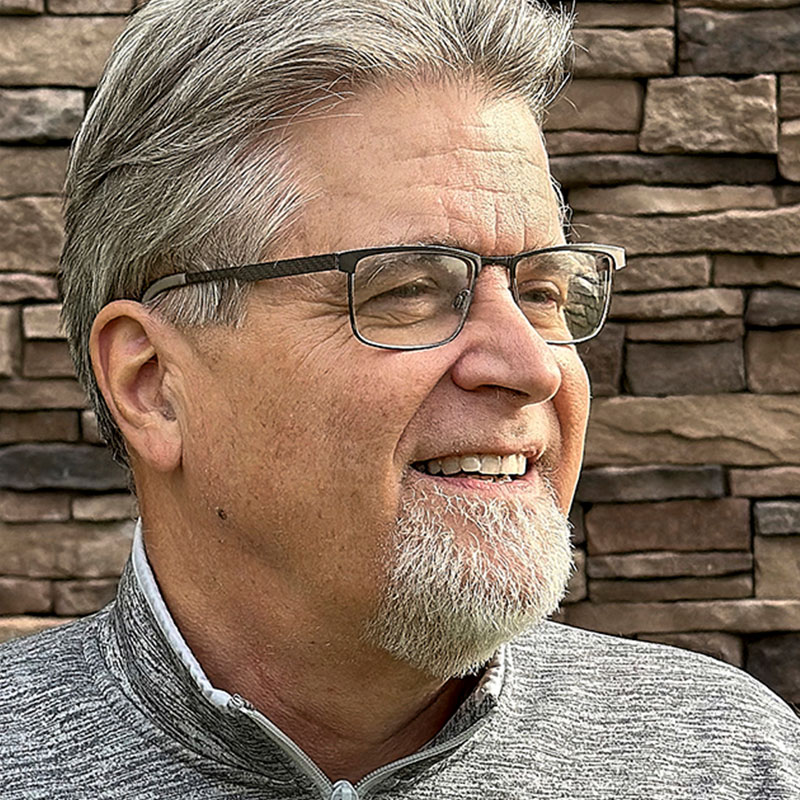
In my last post, Why We Should Pursue Restorative Justice. Not Revenge, I made the case that pursuing restorative justice to deal with evil in the world is superior to retributive methods. Retribution, in the form of harsh punishments, revenge, militancy, and war, always has unintended consequences that makes the fight against evil worse in the long run. Yet restorative justice—defined as a way of holding people accountable for evil through challenging wrongdoing with the goal of restoring relationships—produces exponentially better outcomes and reaps long term benefits. Shane Claiborne and Michael Martin, in their book, Beating Guns: Hope for People Who are Weary of Violence, call this “the third way.” It responds to evil neither by fighting or fleeing. In other words, the third way is the way that Jesus taught. But what are some examples of restorative ways of addressing evil? Here are three restorative justice stories that show how this works. They are excerpts from my book, Breaking Bad Faith. They tell part of the story where the book goes into more detail. Citations of sources can be found in the book.
Restorative Justice Story #1 – A Jewish couple extends love to a hate-filled anti-Semitic extremist. He ends up converting to Judaism.
____________________
In his book, The Catalyst: How to Change Anyone’s Mind, Jonah Berger tells the story of Michael and Julie Weisser. Michael was a newly appointed Rabbi at the local synagogue in Lincoln, Nebraska. One day they received a call. The caller spoke one sentence and then hung up: “You will be sorry you ever moved to 5810 Randolph Street, Jew boy.”
Days later, a package came in the mail with more threats. “The KKK is watching you, scum,” a lone note read. The package was full of flyers and brochures with racist and hateful themes that were spouting the inferiority of non-whites and Nazi narratives that were praising the Holocaust. Police believed the man responsible was a notorious KKK leader named Larry Trapp who loved violence and stockpiled automatic weapons.
Scared and intimidated, the Weissers didn’t know what to do. Julie ended up doing some research on Trapp and discovered he had serious health problems as a diabetic and both his legs had been amputated.
Later, Michael decided to call Trapp back and try to both reason with him and extend a little kindness. The man never answered the phone, so Michael left the following messages.
“Larry, you better think about all this hatred you’re spreading, because one day you’re going to have to answer to God for all this hatred, and it’s not going to be easy.”
He used Daryl Davis’ line [See story #3 below] (not knowing, to my knowledge, who Davis was): “Why do you hate me? You don’t even know me, so how can you hate me?” He tried to reason with Trapp about the truth about Nazism. “Larry, do you know the very first laws the Hitler’s Nazis passed were against people like yourself who had no legs?…Do you realize you would have been among the first to die under Hitler? Why do you love Nazis so much?”
“Larry, there’s a lot of love out there. You’re not getting any of it. Don’t you want some?”
Eventually, Larry answered the phone and laid into Michael with some F bombs. “What the f*ck do you want? Why the f*ck are you harassing me?”
“I’m not trying to harass you, Larry, I just want to talk,” Michael said.
“Make it quick.”
“Well, I was thinking you might need a hand with something, and I wondered if I could help. I know you’re in a wheelchair, and I thought maybe I could take you to the grocery store or something.”
That struck a chord. Larry was shocked and at a loss for words. He abruptly ended the call without taking up the offer but seemed to appreciate it. Eventually, things came to a head. One night, Larry called asking for the Rabbi and said, “I want out, but I don’t know how.” Within a short time, Larry had agreed for Michael and Julie to come over with some food to talk. After they did, Larry ultimately broke down and cried, admitted his problem with hatred, and said he was sorry. Michael and Julie put their arms around him and told him everything would be okay. With time, Larry formally resigned from the KKK and began apologizing to all the people he had hurt.
What blew me away [in these restorative justice stories] is what happened at the end. Because of Trapp’s failing health due to kidney failure, for which the doctors gave him a year to live, and the fact that the Weissers invited him into their home to live so Julie could care for him, Larry Trapp actually converted to Judaism. The restoration of relationships was complete. He had been converted by love, not retribution, punishment, or the threat of hell.
____________________
Restorative Justice Story #2 – A Muslim community’s love and hospitality melts a domestic terrorist’s violent hatred of Muslims. He eventually joins their mosque.
________________
Richard “Mac” McKinney, a former Marine, had developed a hatred of Islam from his experience in combat in Iraq and Afghanistan, which taught him to see Muslims as subhuman. He came to believe, through a painfully warped interpretation of Islam, that all of it was a cancer worthy of eradication. When he returned home to Muncie, Indiana, he saw how many Muslim immigrants and converts had since settled in his former community. He was furious. One Friday in 2009, he went to the Islamic Center of Muncie with an overall mission of planting a bomb at the mosque “in hopes of killing or wounding hundreds of Muslims.” In this particular scouting visit, something happened that changed the whole trajectory of both his evil philosophy and his life.
Several of the mosque leaders welcomed him. One of them, Bibi Bahrami, called by some “the Mother Teresa of the Muslim community,” reached out to Richard and invited him to her home. She prepared a delicious Afghan meal for him. Others in the mosque, including Bibi’s husband Mohammad, spoke to him with kindness, and several literally embraced him. Their philosophy, as Bibi would state, was that “God created all of us to get to know each other and take care of each other—not to despise.” In time, a remarkable transformation took place in Richard. He continued to visit the mosque. Within weeks, he formed friendships with Muslims. Astonishingly, he eventually converted to Islam and became one of the mosque’s leaders. It was the kindness of the people at the Center that was most decisive in converting him, McKinney shared. His restorative justice story is told in the documentary, “Stranger at the Gate.”
____________________
Story #3 – A black man influences over 200 Ku Klux Klansmen to give up their robes and denounce racism.
________________
Enter the third way—the way that Daryl Davis follows without calling it that. One day, Davis, a black musician, met a Ku Klux Klansman at a bar where he was performing. The Klansman was impressed with Davis’s music and invited him to have a drink with him. Amazingly, the Klansman admitted it was the first time in his life he had sat down one-on-one with a black man. Davis soon discovered the man was in the Klan. That started Davis down a path to meet more Klan members and ask them one critical question: How can you hate me when you don’t even know me?
[As in most restorative justice stories] the first step was to learn about their world. “The best thing you do is you study up on the subject as much as you can. I went in armed, not with a weapon, but with knowledge. I knew as much about the Klan, if not more than many of the Klan people that I interviewed. When they see that you know about their organization, their belief system, they respect you.”Davis discovered the major reason cited or implied for hating blacks was that all blacks are inferior. The Klan members sincerely believed that blacks have smaller brains, were incapable of learning higher knowledge, and have a gene that makes them violent. Davis’ approach was to befriend Klan members, gain their respect from his knowledge of their organization, and then start challenging these racist views. His goal was not to take revenge or demand retribution on racist people who had harmed individual blacks and society, but rather to seek to understand them and then seek to be understood.
Davis began to turn their internal “logic” on themselves. “I’m not violent. Your theory doesn’t hold,” he said to one who used the violent gene argument.
“That’s because your gene is latent,” the man said. Dumbfounded, Davis was speechless. Finally, he thought of reciprocal logic. He claimed everybody knows white people have a gene that makes them serial killers.
“What do you mean?” the man replied.
All serial killers are white, Davis explained. When he asked him to name three black serial killers, the Klan member couldn’t, wherein Davis immediately named four very famous white ones. “Son, you are a serial killer,” he declared.
“I’ve never killed anybody,” he replied.
“Your gene is latent, it hasn’t come out yet,” Davis retorted. Ultimately, the man had to concede he had a point, that it’s easy to paint someone in a bad light by manipulating facts.
Through befriending Klansmen, doing them favors, visiting their meetings, and calmly challenging their world view, over the years, Davis eventually convinced 200 Klan members to give up their robes. Admittedly, Davis acknowledges some are beyond saving. But his approach works on those who aren’t.
____________________
This is how restorative justice stories work. In my book, Breaking Bad Faith, I share other restorative examples about criminal justice reform, rethinking how prisons should work, restorative responses to combative people, and how some European countries successfully addressed terrorism and Nazism nonviolently. You can also read how this applies to the Israel-Hamas War here: An Empathetic, Peace Seeking Response to the Israel-Hamas War.
******
Michael Camp tends the Spiritual Brewpub, which helps disillusioned or post-evangelicals uncover historical facts and insights that help them deconstruct, rethink, and rebuild a more authentic faith or spirituality. He is the author of Breaking Bad Faith: Exposing Myth and Violence in Popular Theology to Recover the Path of Peace. To get specific help deconstructing conservative Christianity and rebuilding healthy faith, see Michael’s Religious Deconstruction Workshop.














